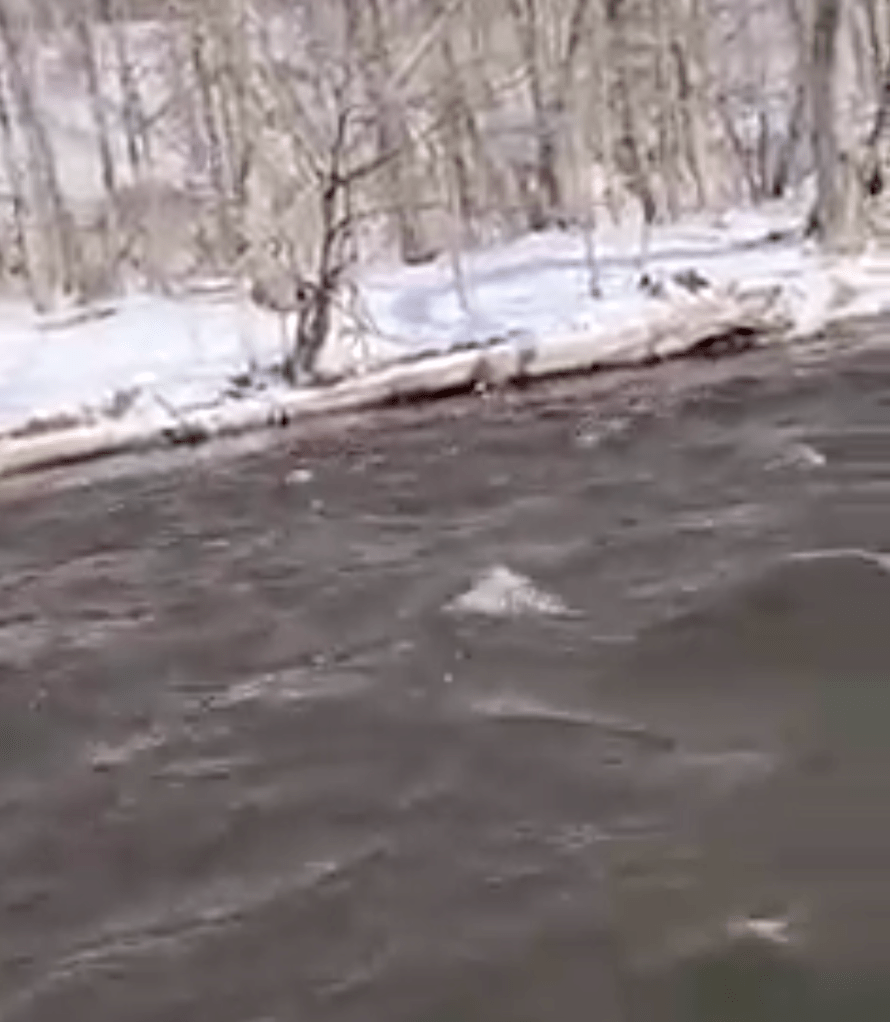Last week, I went exploring on X Brook. It wasn’t a great day for fishing small streams; windy, cold front, brilliant sunshine and no canopy. Until recently, X Brook was completely off my radar. Access isn’t easy; you’ve got to do a bit of walking, and it’s surrounded by fairly dense woods and bushes. I thought you’d like to hear how I went about reconning some new water.
First, I hiked through the woods, heading upstream, taking care not to walk with heavy footfalls, and never getting close enough to the water to spook any fish. I made mental notes of potentially fishy areas, like long, glassy pools, and plunges. I wanted to be prepared for them for when I worked the brook downstream.
I kept the fly selection simple. We’re into the netherworld of not spring, not winter, so fish could be hanging out in cold water lies (think maximum depth in any given brook) as well as snottier runs and plunges. A bushy dry with a beadhead nymph dropper would cover two sections of water on any given drift. I also had a tungsten beadhead attractor nymphy/streamery thing to jig in the plunges. I felt like that had me covered for whatever water I encountered. I switched rigs up a few times, but the answer was always the same — no one home, or no one interested.

One of the things I like to do when I get no hits in a pool or run is see if I missed anything. What I mean is, if there’s a particularly sexy bit of water, and I blank, I like to find out if there were any fish. I start by standing up and making myself large in full view of anything that may be hiding. Sometimes I’ll wave a stick through the water to try to and spook fish. It’s a good idea to take great care when wading in a small stream, especially from fall through mid-spring — you don’t want to disturb any redds or crush unhatched eggs. I was a little surprised (not to mention bummed) that I didn’t see a single darting shadow in any of the runs I disturbed.
Finally, there was a decision to be made: is this stream worthy of another visit? In this case, I think it is. There is enough structure, flow and potential canopy. What’s more, I only explored a small section. It may very well be that where I was is more of a late spring/summer/fall environment, and that the best winter water is elsewhere.
I’ll keep you posted.












